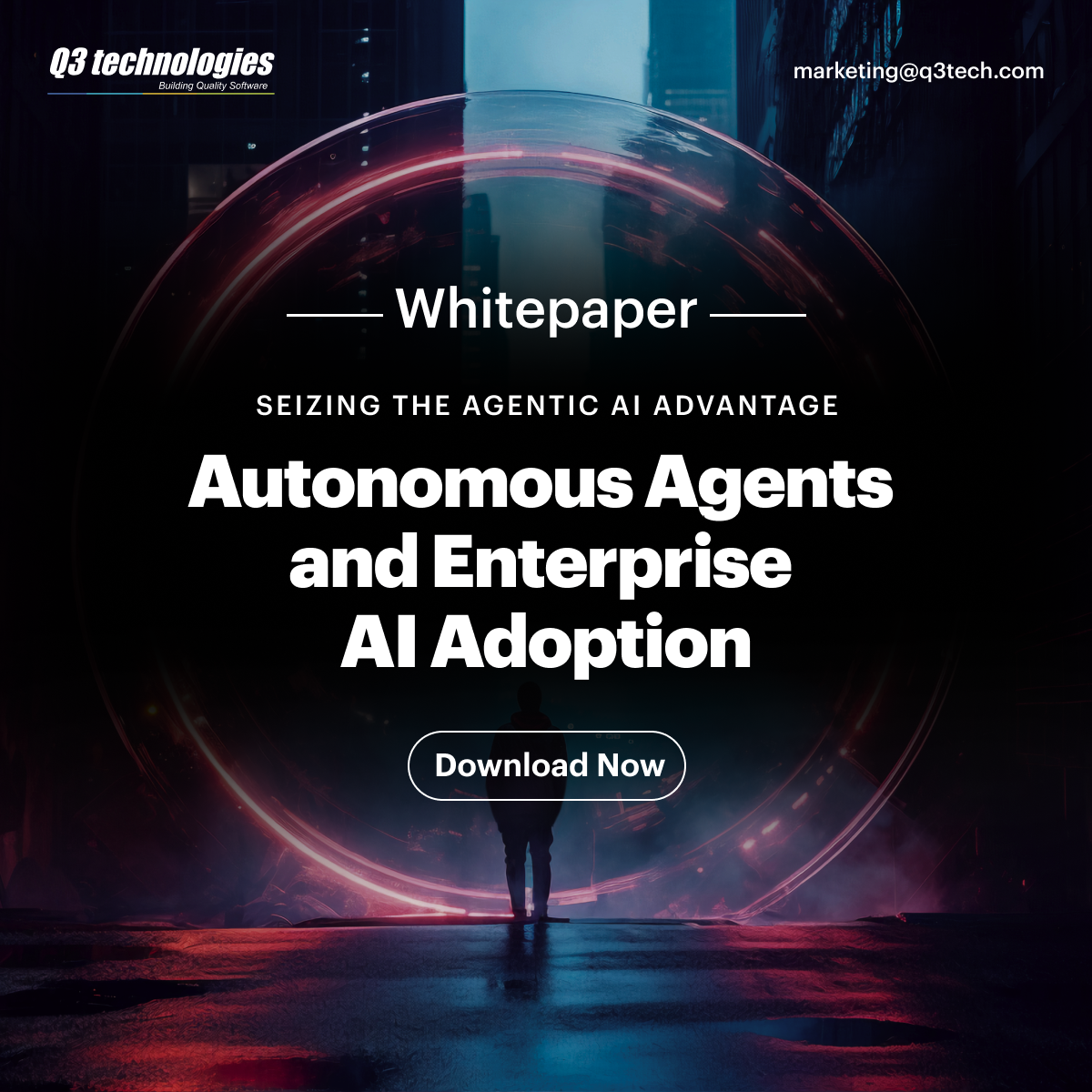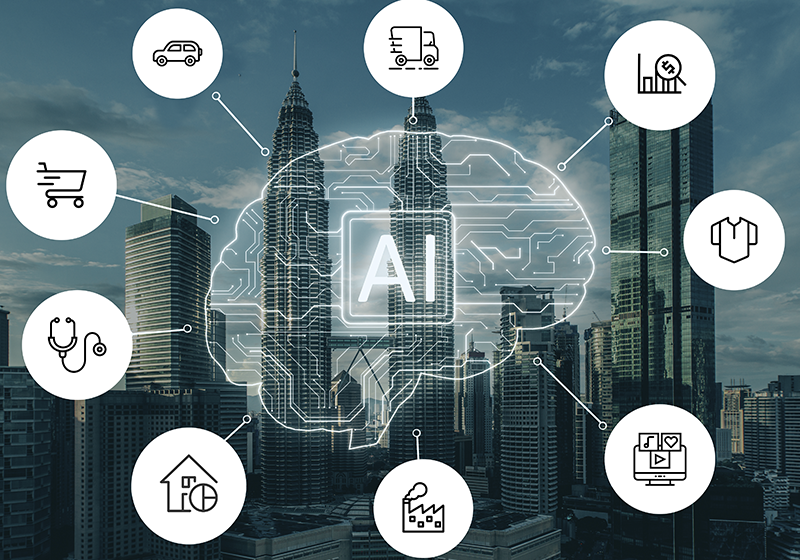Generative AI Services
How Generative AI Is Reshaping the Future
 Updated 13 Jun 2024
Updated 13 Jun 2024
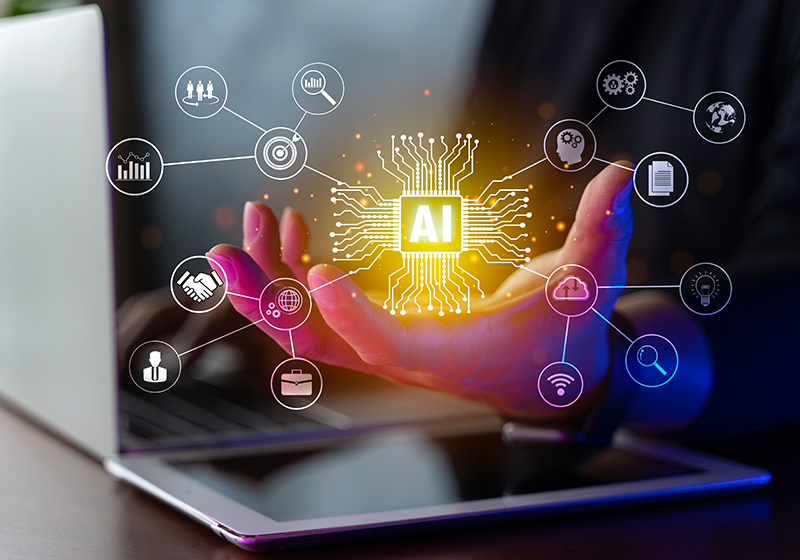
Generative AI Services, a branch of artificial intelligence (AI) focused on creating new data, is rapidly evolving and poised to reshape the future across various industries. By analyzing massive datasets and identifying underlying patterns, generative models can create entirely new content, from realistic images and music to innovative drug discoveries and personalized learning experiences. This article digs deeper into the transformative potential of generative AI, exploring its impact on different sectors and the ethical considerations that come with its development.
Demystifying Generative AI: How Does it Work?
At its core, generative AI utilizes machine learning algorithms trained on vast amounts of data. These algorithms learn to recognize the relationships and structures within the data, allowing them to generate entirely new outputs that mimic or even surpass the originals. Here’s a breakdown of the key generative AI techniques:
- Generative Adversarial Networks (GANs): Two neural networks compete against each other. One, the generator, creates new data, while the other, the discriminator, tries to determine if the generated data is real or fake. This continuous competition refines the generator’s ability to produce increasingly realistic outputs.
- Variational Autoencoders (VAEs): These models encode data into a latent space, a compressed representation capturing the data’s essence. VAEs can then generate new data points by sampling from this latent space, allowing for variations within the defined parameters.
These techniques empower Generative AI Services to produce a wide range of outputs, including:
- Images: Creating photorealistic images of people, objects, or even entirely new landscapes.
- Text: Generating realistic and grammatically correct creative text formats like poems, code, scripts, musical pieces, and even emails.
- 3D Models: Producing intricate 3D models for use in product design, architecture, and even video games.
Read Our Case Study: Elevating Recovery Rate (RR) And Reducing Loan Default Using AI-Driven Predictive Analytics For A Leading Financial Lender
A Generative Revolution: Redefining Industries
The applications of generative AI extend far beyond mere novelty. It’s a transformative technology poised to reshape entire industries, fostering innovation and progress at an unprecedented pace. Let’s delve deeper into some of the key sectors being redefined by generative AI:
- Drug Discovery and Medicine: The traditional drug discovery process is often slow and expensive. Generative AI Services offered by AI Development Companies offer a powerful solution by analyzing vast datasets of molecular structures, including existing drugs, protein interactions, and genetic information. This allows AI models to identify potential drug candidates with specific properties, accelerating the process and increasing the likelihood of success. Imagine AI sifting through millions of possibilities to pinpoint molecules with the ideal combination of targeting disease and minimizing side effects. This has the potential to revolutionize the fight against illnesses, leading to the development of life-saving treatments for currently untreatable conditions. The worldwide market value of Generative AI in drug discovery is expected to rise from $126.07 million in 2022 to an estimated $1,417.83 million by 2032.
- Materials Science: Generative AI Services are transforming materials science by enabling researchers to virtually simulate the properties of materials at an atomic level. This in-silico approach allows for the exploration of countless material combinations and their potential functionalities. Think of designing a new material with specific characteristics, like a lightweight yet incredibly strong metal for aerospace applications, or a solar panel material that converts sunlight into electricity with unmatched efficiency. Generative AI Development Companies empower scientists to explore these possibilities virtually before ever stepping foot in a lab, saving time and resources while accelerating the development of groundbreaking materials.
- Creative Industries: The world of art, music, and writing is experiencing a renaissance with the advent of generative AI. While some may fear it replacing human creativity, generative AI acts more as a collaborator, sparking inspiration and expanding creative boundaries. Artists can leverage generative models to generate new ideas, explore variations on existing themes, or even create entire pieces within a specific style. Imagine a musician feeding a melody into an AI model and receiving back a full orchestral arrangement, or a writer prompting an AI to generate different narrative threads to explore within their story. Generative AI Services empower creatives to push the envelope, fostering innovation and expanding the horizons of artistic expression.
Beyond these core examples, the tendrils of generative AI are reaching into numerous other sectors:
- Personalized Learning: Tailoring educational experiences to individual students’ needs by generating customized learning materials and adapting difficulty levels.
- E-commerce and Marketing: Creating personalized product recommendations and marketing content that echoes with specific customer segments.
- Cybersecurity: Generating synthetic data for training security systems to address and defend against novel cyber threats.
- Fashion Design: Gen AI can generate new clothing designs, factoring in trends, materials, and target demographics, streamlining the design process, and fostering innovation.
- Product Development: Generative models can suggest new product features, optimize product designs for specific functionalities, and even personalize product recommendations for individual customers.
- Urban Planning: Gen AI can be used to generate simulations of different urban planning scenarios, optimizing traffic flow, resource allocation, and overall city functionality.
- Climate Change Solutions: Generative AI Services offered by AI Development Companies are being utilized to model climate change scenarios and identify potential solutions, like designing more efficient energy grids or developing new technologies for carbon capture.
Exploring Specific Applications of Generative AI
Generative AI Services, with their ability to create entirely new content and data, are rapidly transforming numerous aspects of our lives. This technology is not just about novelty; it’s a powerful tool with the ability to reshape and transform various industries and address some of humanity’s most pressing challenges.
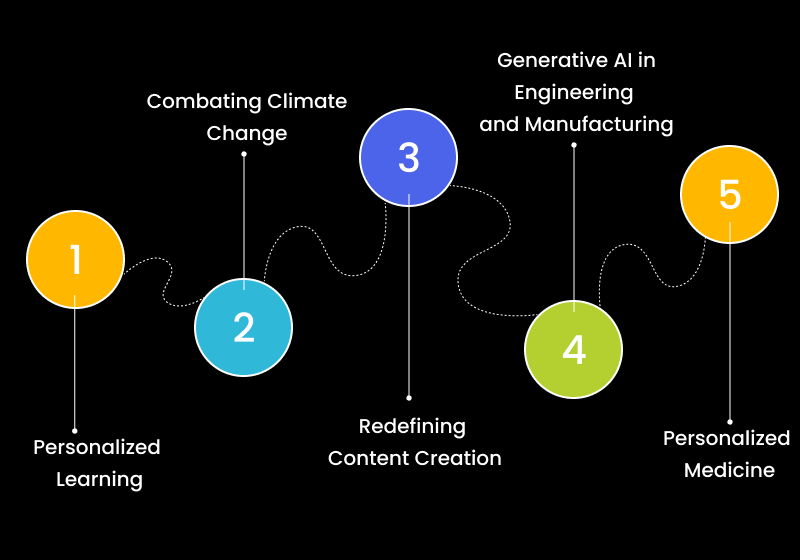
1. Personalized Learning
Imagine a classroom where every student obtains a customized learning experience as per their unique strengths, weaknesses, and learning pace. This vision is becoming increasingly possible with the advent of generative AI in education. AI Development Companies are creating generative AI-powered tools that can:
- Generate Personalized Learning Materials: Textbooks and worksheets can be dynamically created based on individual student needs. AI can identify knowledge gaps and generate targeted exercises, practice problems, or explanations to address them. For instance, an AI system might create a customized study guide for a student struggling with a specific mathematical concept, focusing on relevant examples and practice problems.
- Adaptive Learning Systems: Generative AI Services can power adaptive learning platforms that adjust the difficulty level of learning materials in real time based on student performance. This ensures students are neither bored by repetitive tasks nor overwhelmed by too-challenging concepts. An adaptive learning system might present a student with more complex material after they consistently demonstrate mastery of the basics or provide additional support and scaffolding if they encounter difficulties. Did you know the EdTech sector is expected to see a significant increase in AI adoption, with 47% of learning management tools projected to be AI-enabled by 2024?
- Personalized Feedback and Support: AI tutors powered by generative AI can analyze student work and provide tailored feedback, highlighting areas for improvement and offering targeted suggestions. This can significantly improve student engagement and understanding. An AI tutor could analyze a student’s essay and identify areas where their writing could be strengthened, suggesting more precise vocabulary or improved sentence structure.
2. Combating Climate Change
AI as a Partner in Sustainability Climate change poses an existential threat to our planet. Generative AI Services are emerging as a powerful tool in the fight against climate change by:
- Simulating Climate Scenarios: AI models can be used to create detailed simulations of future climate conditions based on various factors like greenhouse gas emissions, deforestation rates, and ocean acidification. These simulations can inform decision-making and help us understand the potential consequences of different climate change trajectories. For instance, AI simulations could predict the effect of rising sea levels on the coastal communities or the potential changes in precipitation patterns that could affect agricultural yields.
- Optimizing Climate Interventions: Once potential climate scenarios are modeled, Generative AI Services can be used to identify and optimize climate interventions. This could involve designing more efficient renewable energy systems, like AI-optimized solar panels that maximize energy capture based on local weather patterns, or developing new technologies for carbon capture, such as AI-driven algorithms for identifying and filtering greenhouse gases from industrial emissions.
- Accelerating Scientific Discovery: Generative AI Development Companies are creating generative AI models that can analyze vast datasets of climate data to recognize patterns and trends which the human researchers might miss out. This can lead to new scientific discoveries and accelerate our understanding of climate change, paving the way for more effective solutions. For instance, AI might identify previously overlooked correlations between climate variables or discover unknown feedback loops within the climate system, leading to a more comprehensive understanding of how our planet’s climate functions.
3. Redefining Content Creation
The creative industries are witnessing a renaissance with the advent of generative AI. While some may fear it replacing human creativity, generative AI acts more as a collaborator, sparking inspiration and expanding creative boundaries.
- Personalized Marketing and Advertising: Generative AI Services can analyze big amount of customer data to create personalized marketing campaigns and advertising content. This could involve generating targeted ad copy, product recommendations, or even personalized video ads that resonate with individual customer preferences. Imagine an AI system creating a social media ad campaign for a clothing brand that tailors the visuals and messaging to the specific demographics and interests of each viewer.
- Design and Innovation: Generative AI Services can be used to create new design ideas for products, packaging, or even entire marketing campaigns. This allows designers to explore a broad range of possibilities and come up with innovative concepts that might not have been envisioned otherwise. For instance, an AI model could be used to generate variations on a logo design, providing a broader range of options for human designers to choose from and refine.
- Augmenting Artistic Expression: Artists can leverage Generative AI Services to generate new ideas, explore variations on existing themes, or even create entire pieces within a specific style. This can spark inspiration, overcome creative blocks, and lead to the creation of entirely new artistic forms. A musician might use an AI model to generate a melody based on a particular genre or mood and then use that melody as a starting point for composing a complete song. By providing creative tools and inspiration, generative AI empowers creators to push the envelope and redefine the boundaries of artistic expression in various fields.
4. Generative AI in Engineering and Manufacturing:
According to Capgemini’s research, 55% of manufacturers are actively exploring the potential of generative AI, and another 45% have moved to pilot projects. Generative AI is making waves in the engineering and manufacturing sectors by:
- Optimizing Product Design: Generative AI Services can be used to simulate the performance of different product designs under various conditions. This allows engineers to identify the optimal design for specific functionalities, leading to the development of more efficient and durable products. AI simulations could be used to optimize the design of an airplane wing for maximum fuel efficiency or to create a lighter and stronger material for building bridges.
- Automated Material Discovery: The traditional process of material discovery is often slow and laborious. Generative AI Development Companies are creating generative AI models that can accelerate this process by virtually simulating the properties of new materials at an atomic level. This allows scientists to identify materials with specific functionalities, leading to the development of new materials with groundbreaking properties. Generative AI could be used to design a new material with superior electrical conductivity for use in solar panels or a lightweight and heat-resistant material for use in spacecraft.
- Generative Design for Manufacturing: Generative AI can be used to create new manufacturing processes or optimize existing ones. This can head to increased efficiency, reduced waste, and faster production times. AI models could be used to design custom assembly lines for new products or optimize existing processes to lessen material waste and energy consumption.
5. Personalized Medicine: A New Era of Patient-Centric Care
The future of medicine lies in a shift towards personalized treatment plans tailored to individual patients’ unique needs. Generative AI is the lead of this revolution, and AI Development Companies are creating advanced models that can:
- Analyze Patient Data: AI can analyze a patient’s medical history, genetic information, lifestyle habits, and other data points to identify potential disease risks and predict individual responses to different treatment options. This allows for more effective therapies. AI analysis might reveal a specific genetic mutation that makes a patient more susceptible to a particular disease, allowing doctors to tailor preventative measures or treatment strategies.
- Drug Discovery and Development: Generative AI models can be used to virtually simulate the properties of new drug molecules, accelerating the drug discovery process and increasing the likelihood of success. AI Development Companies are creating generative AI models that can analyze vast libraries of existing drugs and molecular structures to identify potential candidates for new medications, significantly reducing the time and cost associated with traditional drug development. It is anticipated that by 2028, AI will save the pharmaceutical industry $70 billion.
- AI-powered Diagnostics: AI algorithms can analyze medical images like X-rays or MRIs with unprecedented accuracy, assisting doctors in diagnosing diseases at earlier stages and improving patient outcomes. Generative AI models can be educated on vast datasets of medical images by AI Development Companies. These models can then identify subtle patterns that human eye can miss, leading to earlier and more accurate diagnoses.
The Ethical Landscape: Navigating the Future of Generative AI
The immense potential of generative AI is undeniable. It holds the promise of accelerating scientific breakthroughs, personalizing experiences, and fostering innovation across industries. However, with such power comes a responsibility to ensure its development and deployment are conducted ethically. Read some of the key ethical considerations that necessitate careful attention:
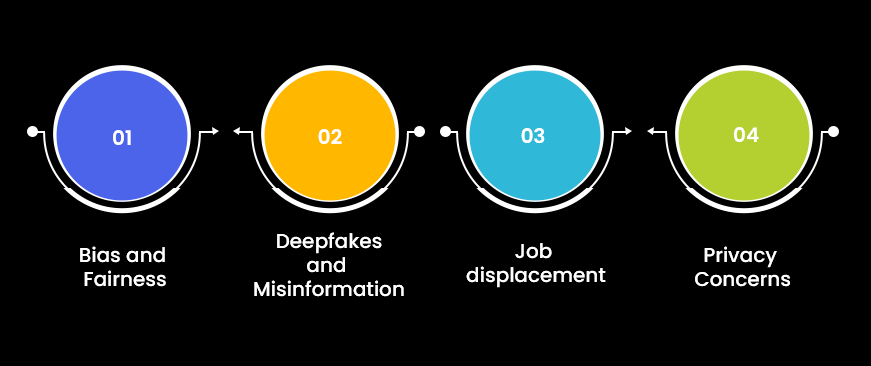
1. Bias and Fairness
Generative AI models are only as good as the data on which they are trained. If the training data is biased, the outputs will reflect those biases. This can lead to discriminatory outcomes, for example, in areas like loan approvals, facial recognition software, or even hiring practices. Imagine an AI Development Company creating a generative AI model for loan approvals that is trained on a dataset where, historically, loans were more likely to be approved for men than women. This model could then perpetuate this bias by unfairly rejecting loan applications from qualified female borrowers. Mitigating bias requires a multi-pronged approach:
- Curating Diverse Datasets: Researchers and developers must actively seek out and incorporate diverse datasets that represent the real world. This includes ensuring a balance in race, gender, ethnicity, and other relevant demographics. AI Development Companies building generative AI models should prioritize using such diverse datasets to avoid perpetuating biases.
- Algorithmic Auditing: Regularly auditing generative AI models for potential biases is crucial. Techniques like fairness metrics and bias detection algorithms can help identify and address these issues.
- Human Oversight: While Generative AI Services can be powerful tools, human oversight remains essential. Humans can identify and correct for biases in the model’s outputs, ensuring fairness and ethical application.
2. Deepfakes and Misinformation
One of the most worried aspects of generative AI is its ability to create hyper-realistic synthetic media, often referred to as “deepfakes.” In 2023, identified deepfake adult videos skyrocketed by a staggering 550%, reaching a concerning 95,820 cases, highlighting the rapid proliferation of harmful deepfakes enabled by Generative AI. These deepfakes can be used to manipulate videos or audio recordings, potentially leading to the spread of wrong information and the loss of trust in media. Imagine a deepfake video of a politician making a controversial statement, created using a generative AI model, going viral right before an election. This could have a significant impact on public opinion and the democratic process. Combating deep fakes requires a multifaceted approach:
- Developing Detection Methods: Researchers are actively developing techniques to detect and identify deepfakes. These methods leverage machine learning and advanced image analysis to distinguish real from synthetic media.
- User Education: Educating the public on how to critically evaluate information online is essential. Understanding the capabilities of generative AI and fostering healthy skepticism towards seemingly authentic content can help mitigate the spread of misinformation.
- Regulatory Frameworks: Developing clear regulations around the creation and dissemination of deepfakes is crucial. This can help deter malicious actors and ensure the responsible use of this technology.
3. Job displacement
As generative AI automates tasks currently performed by humans, concerns regarding job displacement become a pressing issue. While AI is most probably to completely replace human workers soon, it is likely to transform the job market significantly. Imagine a world where Generative AI Services are used to automate tasks like data entry, customer service interactions, or even aspects of financial analysis. To navigate this challenge, we need to:
- Focus on Reskilling: Investing in programs that equip individuals with the skills needed to thrive in an AI-driven economy is crucial. This includes fostering skills in areas like critical thinking, creativity, and problem-solving, which are difficult for AI to replicate.
- Universal Basic Income (UBI): The potential for widespread job displacement raises the question of UBI, a form of social safety net that provides a guaranteed income to all citizens. This could help alleviate the economic hardship caused by job automation.
- Human-AI Collaboration: The future of work is likely to see a greater emphasis on human-AI collaboration. Humans will leverage AI tools to augment their capabilities and focus on tasks that require uniquely human skills like empathy, judgment, and creativity.
4. Privacy Concerns
Generative AI models are often trained on vast amounts of data, some of which may be personal. This rises concerns about privacy and the potential misuse of this data. Here’s a deeper look at this issue:
- Data Security: Robust data security measures are essential to protect personal information from unauthorized access or breaches. This includes encryption techniques, access controls, and regular security audits. AI Development Companies creating generative AI models must prioritize implementing solid data security measures to safeguard user privacy.
- Data Anonymization: Techniques like anonymization and differential privacy can be used to obscure personal information within datasets while still allowing for effective training of generative AI models.
- Transparency and User Control: Individuals should have clear information about how their data is being used to train generative AI models and be able to opt-out or request the deletion of their data if desired.
Generative AI, with its ability to create entirely new data and content, is rapidly transforming drug discovery, education, artistic expression, and product design. To ensure this powerful technology serves humanity, let’s harness its potential together. While responsible Generative AI Services from ethical AI Development Companies hold immense promise, we must stay informed about ethical considerations and advocate for responsible development. Explore generative AI’s potential and join the conversation about shaping a brighter future with AI.
FAQs
1. Will Generative AI replace human artists and creatives?
A. Generative AI enhances human creativity, acting as a collaborator rather than a replacement, helping artists overcome creative blocks and explore new possibilities.
2. Is Generative AI safe? What about deepfakes and misinformation?
A. While generative AI can create deepfakes and spread misinformation, developing detection methods and implementing regulations are key to ensuring responsible use.
3. How will Generative AI impact the job market? Will it lead to mass unemployment?
A. The job market will transform with generative AI automating certain tasks. Reskilling and considering Universal Basic Income is crucial to address potential job displacement.
4. Can Generative AI be biased? How can we ensure fairness in its applications?
A. AI models can reflect biases present in their training data. Mitigating bias involves using diverse datasets, conducting algorithmic audits, and maintaining human oversight.
5. How will Generative AI be used to address climate change?
A. In the fight against climate change, generative AI aids by simulating future scenarios, optimizing renewable energy systems, and accelerating scientific discoveries for sustainability.
Explore More
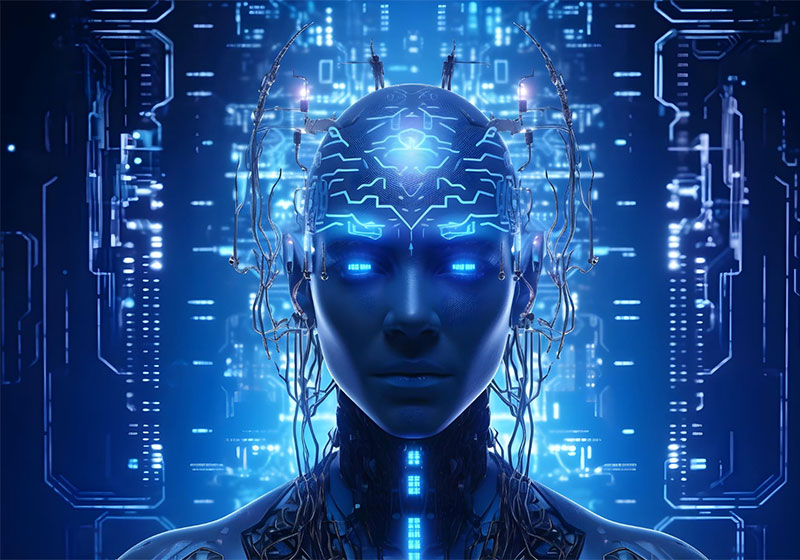
Generative AI
Top Generative AI Use Cases Across Industries in 2026
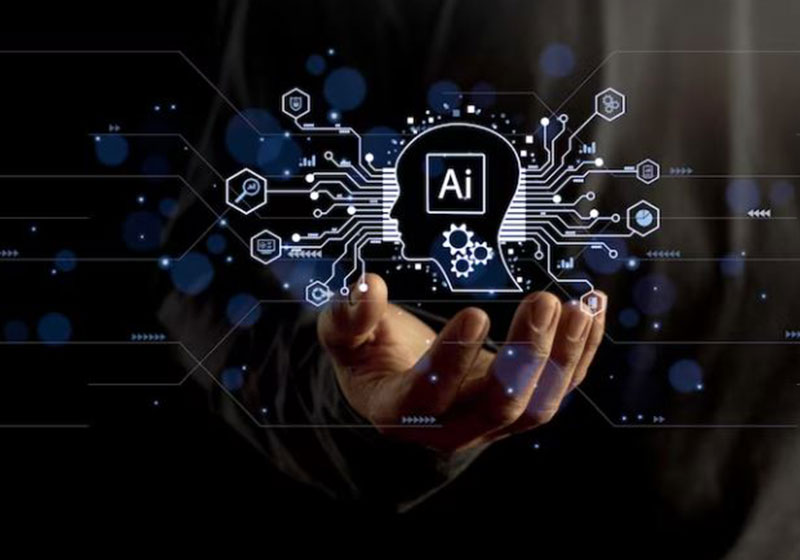
Artificial Intelligence
